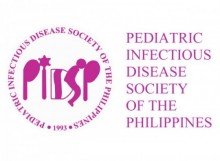Journal 2024 Vol.25 No.1
Psychosocial Impact of COVID-19 Pandemic on Children of Healthcare Workers at a Private Tertiary Hospital in Manila using the Pediatric Symptoms Checklist-35
Rosanne M. Feliciano, M.D., Jacqueline Sew, M.D., Shirley Kwong-Buizon, M.D.
Abstract
Background: The COVID-19 pandemic led to a public health emergency causing changes that may pose a greater risk of behavioral and psychosocial problems for children. Children of healthcare workers are possibly at increased risk of mental health problems due to their parent’s constant exposure to COVID-19. The Pediatric Symptoms Checklist-35 (PSC-35) is one of the validated psychosocial screening tools that helps identify emotional, cognitive, and behavior problems in children.
Objective: To determine the psychosocial impact of COVID-19 pandemic on 6-16 years old children of healthcare workers using the PSC-35.
Methodology: This is a cross-sectional analytic study. Demographic and clinical data were collected. PSC-35 were administered from June 2023-September 2023 to the healthcare worker parents with children aged 6-16 years old. Using this validated PSC-35, questions are a series of signs and symptoms related to impairments in cognitive, emotional, and/or behavioral well-being of children. This 35-item questionnaire was rated and scored as 0 for Never,1 for Sometimes, and 2 for Often. The total scores were evaluated, calculated, and interpreted. A cut off score of 28 or higher indicates a high possibility psychosocial impairment that warrant further investigation or referral to a specialist.
Results and Conclusions: Out of 372 respondents, 4.57% (n=17) children were found at risk of psychosocial impairment with PSC-35 score of 28 and higher. Two demographic factors were found to have a significant correlation with scores above the cutoff: maternal occupation (p-value 0.018) and the presence of comorbidity in the parent (p-value 0.000). Children found to be at risk were advised consultation with a specialist.
KEYWORDS: Children of healthcare workers, PSC -35, COVID-19 pandemic
https://doi.org/10.56964/pidspj20242501003
| View Full Article in PDF format |
